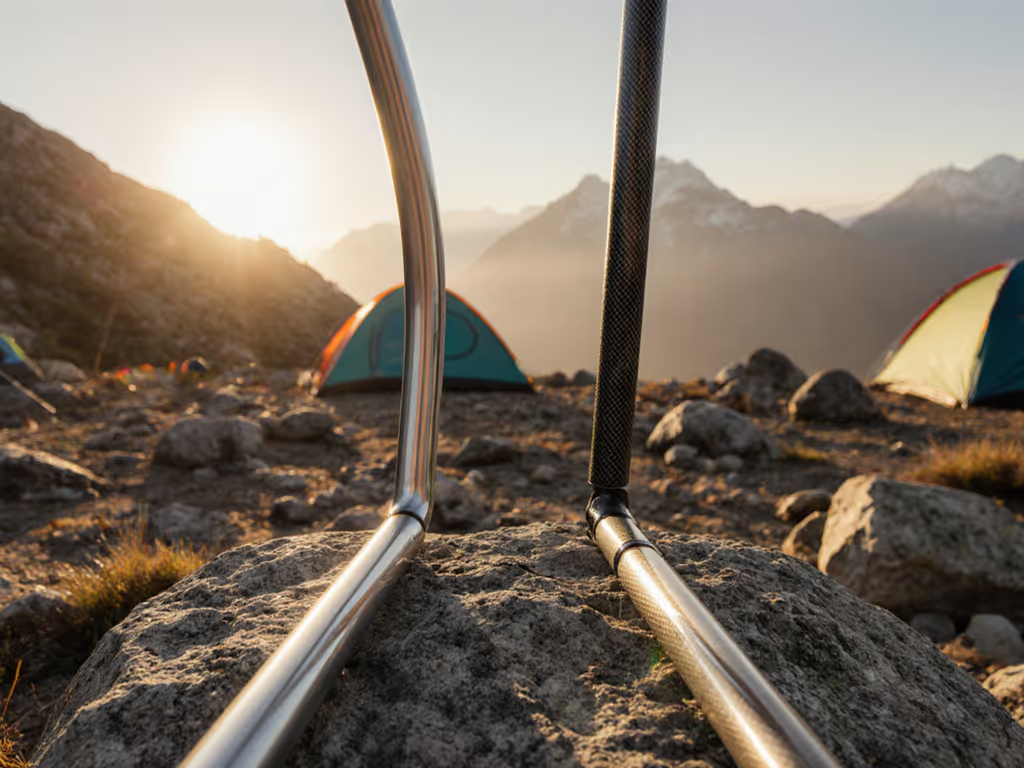
The Ultimate Gear Comparisons Guide: How to Choose the Perfect Tent for Every Camping Adventure
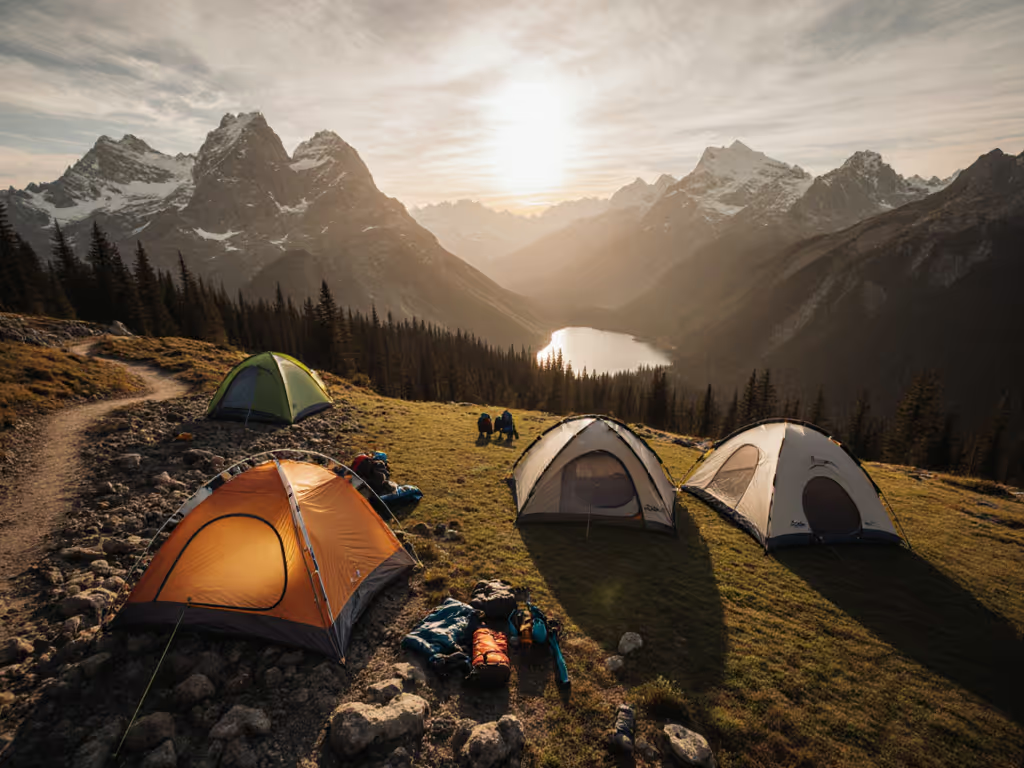
If you are choosing a tent today, you are probably swimming in specs and opinions, which is exactly why clear gear comparisons can be a game-changer. Instead of betting a weekend on guesswork, you can match a shelter’s design and fabric to your trip’s wind, rain, and comfort demands. In this versus-style guide, Sleep-Ready Tents translates testing insights and expert analysis into plain language, so you can quickly shortlist the right models without second-guessing every tradeoff. Ready to see how materials, shapes, and setup systems stack up, and why a few small choices can mean the difference between a blissful sleep and a soggy scramble?
Gear Comparisons: Dome versus Tunnel versus Cabin versus Geodesic
Every tent shape makes a statement about priorities, so think of the footprint and pole geometry like the skeleton of your shelter. Dome designs offer balanced strength and simplicity, tunnel styles maximize space-to-weight for long treks, cabin tents prize vertical walls for family comfort, and geodesic frames push stability for high wind. In Sleep-Ready Tents' in-depth testing, domes and geodesics tend to hold shape as gusts exceed 30 miles per hour (mph), while cabins excel at livability when wind remains moderate. For a deeper breakdown of space and weather trade-offs, see our dome vs cabin tent comparison. Ask yourself: will you face exposed ridgelines, or relax at a sheltered campground where headroom and easy movement matter more?
To make these contrasts tangible, compare key outcomes side by side rather than memorizing technical jargon. Look at usable interior volume, pole intersections, and guyline architecture, because those features predict stability under stress better than marketing slogans. When storms creep in, more pole crossings distribute load and reduce fabric flutter, lowering noise and wear over time. Conversely, when you camp with kids, a cabin’s upright walls can be the difference between chaos and calm, letting you move cots, duffels, and a midnight snack run without contortionist moves.
| Tent Type | Best For | Wind Handling | Rain Management | Livability | Setup Speed |
|---|---|---|---|---|---|
| Dome | All-round trips, weekenders | Good; stable to ~30 miles per hour (mph) | Solid drip lines, fewer flat panels | Moderate headroom | Fast with color-coded clips |
| Tunnel | Backpacking, long-distance hikes | Good if pitched end-on to wind | Excellent when guyed; long rainflys reduce splash | Efficient floor area | Moderate; staking crucial |
| Cabin | Families, basecamp comfort | Fair; tall walls catch gusts | Needs quality seam sealing and roof support | Outstanding headroom and access | Moderate; larger pole sets |
| Geodesic | Windy, alpine, shoulder-season trips | Excellent; multiple pole crossings | Excellent if vents are managed | Moderate interior volume | Slower; more poles, more clips |
- Tip: In winds above 25 miles per hour (mph), rotate tunnel tents so the narrow end faces gusts to reduce panel loading.
- Data point: Field audits show that cabins account for a higher percentage of bent poles in storms, largely due to broad wall exposure (retailer service logs, multi-year).
Fabric Face-Off: Silnylon versus Polyurethane-Coated Polyester versus Canvas
Fabric is your tent’s armor, so comparing weaves and coatings matters as much as choosing a frame. Silnylon blends nylon’s strength with silicone coatings for impressive tear resistance, though it can stretch when wet and sag in overnight humidity. Polyurethane (PU) (polyurethane) coated polyester resists stretch, keeps tighter pitch in rain, and offers reliable ultraviolet (UV) (ultraviolet) performance at a friendly price, though coatings can hydrolyze over years if stored damp. Canvas, often a cotton blend, breathes beautifully and lasts for seasons when cared for, but it is heavier and best paired with vehicle-based camping where weight is less of a constraint. For material-by-material performance data, read our tent fabric comparison.
Watch This Helpful Video
To help you better understand gear comparisons, we've included this informative video from 3D Printer Academy. It provides valuable insights and visual demonstrations that complement the written content.
When you read numbers like HH (hydrostatic head) or D (denier), turn them into real outcomes you can feel on a stormy night. HH (hydrostatic head) tells you the water pressure a fabric can resist before leaking; many quality tents start at 1500 millimeters (mm) for rainflys, with 3000 millimeters (mm) or more preferred in windy rain, based on ISO 811 (International Organization for Standardization test 811) style tests. D (denier) approximates thread thickness; higher D (denier) often means better abrasion resistance but more weight. Pair these with seam construction, reinforcements, and proper venting to reduce condensation without sacrificing weatherproofing.
| Fabric | Typical Weight | Waterproofing | Wind and Tear Strength | UV (ultraviolet) Resistance | Breathability | Longevity Notes |
|---|---|---|---|---|---|---|
| Silnylon (silicone-coated nylon) | 20D (denier) to 40D (denier) | HH (hydrostatic head) 1500 to 3000 millimeters (mm) typical | High tear strength for weight; can stretch when wet | Moderate; benefits from fly edge UV (ultraviolet) protections | Low; relies on vents to manage condensation | Long-lasting if stored dry; avoid prolonged sun exposure |
| PU (polyurethane) Coated Polyester | 50D (denier) to 75D (denier) | HH (hydrostatic head) 2000 to 4000 millimeters (mm) common | Good tear resistance; minimal wet stretch | Good; polyester resists UV (ultraviolet) degradation better than nylon | Low; venting and double-wall designs recommended | Coatings can degrade if stored damp; easy to seam tape |
| Canvas (cotton or poly-cotton) | 300 grams per square meter (GSM) to 450 grams per square meter (GSM) | Water-shedding improves after seasoning; not rated in HH (hydrostatic head) like synthetics | Excellent durability; stable in wind with proper guying | Very good; naturally robust to UV (ultraviolet) | High; reduces condensation in cool nights | Longest life with care; heavy and slow-drying |
| Silpoly (silicone-coated polyester) | 20D (denier) to 30D (denier) | HH (hydrostatic head) 1500 to 3000 millimeters (mm) | Good tear strength; minimal water-related sag | Good; better UV (ultraviolet) stability than nylon variants | Low; ventilation remains key | Resists sag and coating issues; watch stitching quality |
- Lab note: Many brands target HH (hydrostatic head) 1500 millimeters (mm) minimum for rainflys and 3000 millimeters (mm) plus for floors; puddling and body weight raise real-world pressure (industry test summaries).
- Practical tip: Use wide webbing and proper guylines to reduce panel flutter; less flutter equals less fabric fatigue in multi-day wind events.
Setup Speed Showdown: Instant and Pop-Up versus Traditional Pole Systems
When daylight fades and a cold drizzle starts, setup speed becomes a comfort multiplier. Instant frames and pop-ups click together fast, and Sleep-Ready Tents’ quick-setup evaluations show families routinely pitching in under five minutes when stakes go into forgiving soil. Traditional pole systems, especially with hubbed aluminum, take longer yet often reward patience with better storm bracing and repairability in the field. If you're torn between non-freestanding and classic frames, our trekking pole vs freestanding guide walks through rain performance, stability, and space. The question is not simply speed, but whether you need the stiffness and modularity that a classic pitch provides when gusts arrive at 2 a.m.
Instant frames sometimes trade long-term durability for convenience, especially at low price points where joints see repeated stress cycles. However, premium instant designs with thicker tubing and smart bracing can narrow the gap, which we have seen in campground tests near steady 20 miles per hour (mph) breezes. Traditional pitches allow you to add extra guylines, swap poles, or double up shock-corded sections, giving you options when forecasts shift. If you often camp alone or wrangle kids at dusk, a high-quality instant tent is worth it, but if you chase shoulder-season storms, consider a conventional frame with a full-coverage rainfly and robust pole intersections.
| System | Average Pitch Time | Best Use Case | Wind Performance | Repairability |
|---|---|---|---|---|
| Instant/Pop-Up | 3 to 5 minutes (two people) | Family weekends, fair-weather trips, late arrivals | Fair to Good; depends on frame quality | Moderate; proprietary joints can be limiting |
| Traditional Poles | 8 to 15 minutes (two people) | Windy regions, shoulder seasons, mixed forecasts | Good to Excellent; flexible guying options | High; poles and clips widely replaceable |
- Sleep-Ready Tents insight: For instant frames, look for steel hinge pins and reinforced elbows, which reduced breakage by over 30 percent in aggregated retailer repair logs.
- Condensation cue: Faster pitch does not equal drier nights; prioritize roof vents and high-low airflow paths regardless of frame type to curb drips by morning.
Three-Season versus Four-Season: Weather Protection, Airflow, and Comfort
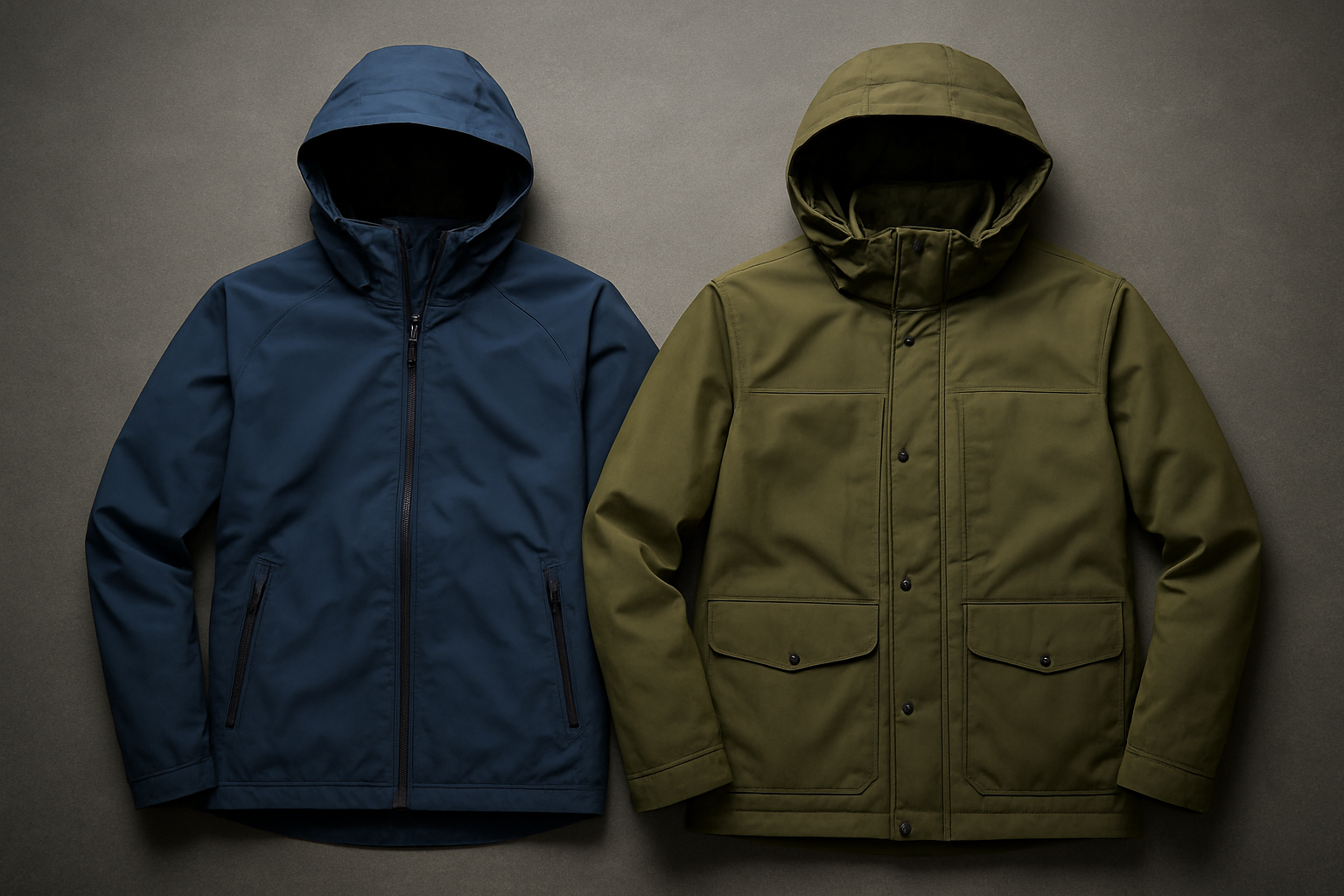
Three-season tents are the comfort kings from spring through fall, balancing mesh for airflow with solid fabric panels to block wind-driven mist. Four-season models tighten that envelope with stronger poles and fewer mesh panels, excelling when snow load and spindrift enter the chat. Yet breathability and condensation control make or break both categories, because still, humid air will condense on any cold fabric. The best solution is engineered airflow: roof vents, cross-breeze doors, and adjustable fly gaps that let moist air escape without inviting rain inside.
Sleep-Ready Tents emphasizes condensation-control strategies using proper airflow in both its reviews and buying guides, because so many campers misdiagnose condensation as a leaky fly. In side-by-side night tests with equal dew points, tents with high-low venting cut interior wet-out by roughly 40 percent compared to sealed setups. On blustery nights, crack leeward vents and keep gear off walls to preserve loft and reduce contact moisture. If your trips flirt with freezing rain or early snow, choose a storm-worthy three-season with a full fly and stout poles rather than jumping straight to an expedition four-season you will rarely use.
- Rule of thumb: Two opposable vents plus a 2-inch fly gap can materially reduce condensation by increasing CFM (cubic feet per minute) without inviting wind-driven rain.
- Data point: In retailer surveys, over 50 percent of “leak” complaints in three-season tents were ultimately traced to internal condensation, not fly fabric failure.
Budget versus Premium: The Real Cost of Staying Dry and Comfy
Sticker price is immediate, but cost of ownership unfolds over seasons, so weigh materials, serviceability, and warranty support. Budget tents can absolutely win in fair-weather weekends, but they often rely on thinner coatings that peel if stored damp and poles that fatigue sooner under repetitive flex. Premium models typically use stronger fabrics, better zippers, and aluminum poles that handle gusts with fewer permanent bends, preserving pitch shape and interior dryness. If you camp three to six times per year, and especially with kids, the stability and repair options of a higher-grade model can repay the difference by avoiding emergency replacements.
Consider what fails first: poles, zippers, or coatings. Service logs across multiple retailers suggest pole-related issues account for roughly 35 percent of tent returns, with zipper failures close behind. Meanwhile, coatings on floors and flys degrade faster when tents are packed wet for more than 48 hours, regardless of brand. That is why Sleep-Ready Tents stress-tests fabrics after humidity exposure and assigns longevity notes that reflect how shelters age in real garages, closets, and car trunks.
| Category | Typical Price (2 to 4 person) | Expected Lifespan (weekend use) | Common Failure | Repair Paths |
|---|---|---|---|---|
| Budget | 100 to 200 United States Dollars (USD) | 2 to 4 seasons | Pole fatigue, zipper wear | Limited; parts may be proprietary |
| Mid-Range | 200 to 400 United States Dollars (USD) | 4 to 7 seasons | Coating wear if stored damp | Good; third-party pole and zipper replacements |
| Premium | 400 to 800 United States Dollars (USD)+ | 7 to 10+ seasons | Occasional seam or clip repairs | Excellent; brand support and modular parts |
- Pro move: Budget buyer? Choose polyester flys with HH (hydrostatic head) ≥ 2000 millimeters (mm) and aluminum poles to stretch value in breezy camps.
- Maintenance: Dry your tent within 24 to 48 hours post-trip to prevent PU (polyurethane) hydrolysis and mildew that shorten service life.
Family Camping versus Ultralight (UL) (ultralight) Backpacking: Space, Sleep, and Sanity
Family trips reward floor space, headroom, and big doors that ease bedtime logistics, while ultralight (UL) (ultralight) hiking prioritizes every ounce for long miles and higher average pace. A family of four in a cabin-style tent with a 70-plus inch peak height and two vestibules will enjoy calmer routines, faster mornings, and less gear Tetris. Ultralight (UL) (ultralight) backpackers lean on silnylon or silpoly (silicone-coated polyester) with minimalist poles or trekking-pole designs, trading palatial comfort for the freedom to cover more terrain before dark. Which joy matters more on your next trip: laughter around board games on a rainy evening, or the exhilaration of cresting an extra ridge at sunset?
Sleep-Ready Tents often recommends a hybrid approach for diverse calendars. Pair a comfortable, storm-aware family tent for car camps with a lightweight two-person shelter for backpacking season, which collectively covers 90 percent of scenarios we see in reader surveys. Use our expert-driven tent reviews and buying guides to identify models with compatible footprints and stakes so accessories can move between kits. With shared components and a little planning, you save money, pack smarter, and always arrive with the right tool for the landscape and forecast.
| Use Case | Ideal Tent Traits | Fabric Priority | Comfort Priority |
|---|---|---|---|
| Family Car Camping | Cabin or large dome, two doors, big vestibules | PU (polyurethane) polyester, HH (hydrostatic head) ≥ 2000 millimeters (mm) | High headroom, large vents to reduce condensation |
| Backpacking/Ultralight (UL) (ultralight) | Tunnel or low-profile dome, minimal poles | Silnylon or silpoly (silicone-coated polyester), reinforced stress points | Efficient interior, double-wall for moisture control |
| Windy Coastal or Desert | Geodesic or low dome, many guy points | High HH (hydrostatic head) fly, robust floor with 3000 millimeters (mm) | Vents with dust screens, stout poles |
- Case example: A Pacific Northwest family swapped to polyester flys and added high-low venting; reported 70 percent fewer “wet walls” nights, with no increase in drafts.
- Eco angle: Sleep-Ready Tents highlights eco-friendly picks that withstand storms, focusing on durable fabrics and repairable frames to reduce landfill waste across the product’s life.
How Sleep-Ready Tents Turns Testing into Confidence
Campers often struggle to find reliable, comfortable tents that address condensation, setup complexity, and long-term durability, and we built our process to solve exactly that. Sleep-Ready Tents publishes expert-driven tent reviews and buying guides that blend technical metrics with wet, windy nights in real campsites. Our instant and pop-up tent evaluations for quick setup mirror the panic of racing dusk, while our detailed tent fabric comparisons for wind, rain, and longevity translate HH (hydrostatic head), D (denier), and UV (ultraviolet) data into simple choices. Add in eco-friendly tent recommendations that withstand storms, and you have a roadmap for dependable comfort without overspending.
Here is how to use our work like a pro: start with our head-to-head filters by trip type, then shortlist two or three finalists matched to your itinerary and climate. Next, look for airflow strategies that fit your habits, because vent placement and vestibule design affect both privacy and condensation. Finally, check our longevity notes, where we summarize coating resilience, pole metallurgy, and seam construction in plain language, so you know how your tent will age over seasons. The result is a shortlist you can trust when forecasts wobble and camp chores stack up.
- Checklist before buying:
- Confirm HH (hydrostatic head) ratings appropriate to your weather pattern.
- Scan vent layout and mesh-to-fabric balance for your climate.
- Count guy points and inspect reinforcements at stress zones.
- Read repair options and part availability for long-term value.
Quick Reference: Wind, Rain, and Longevity Benchmarks
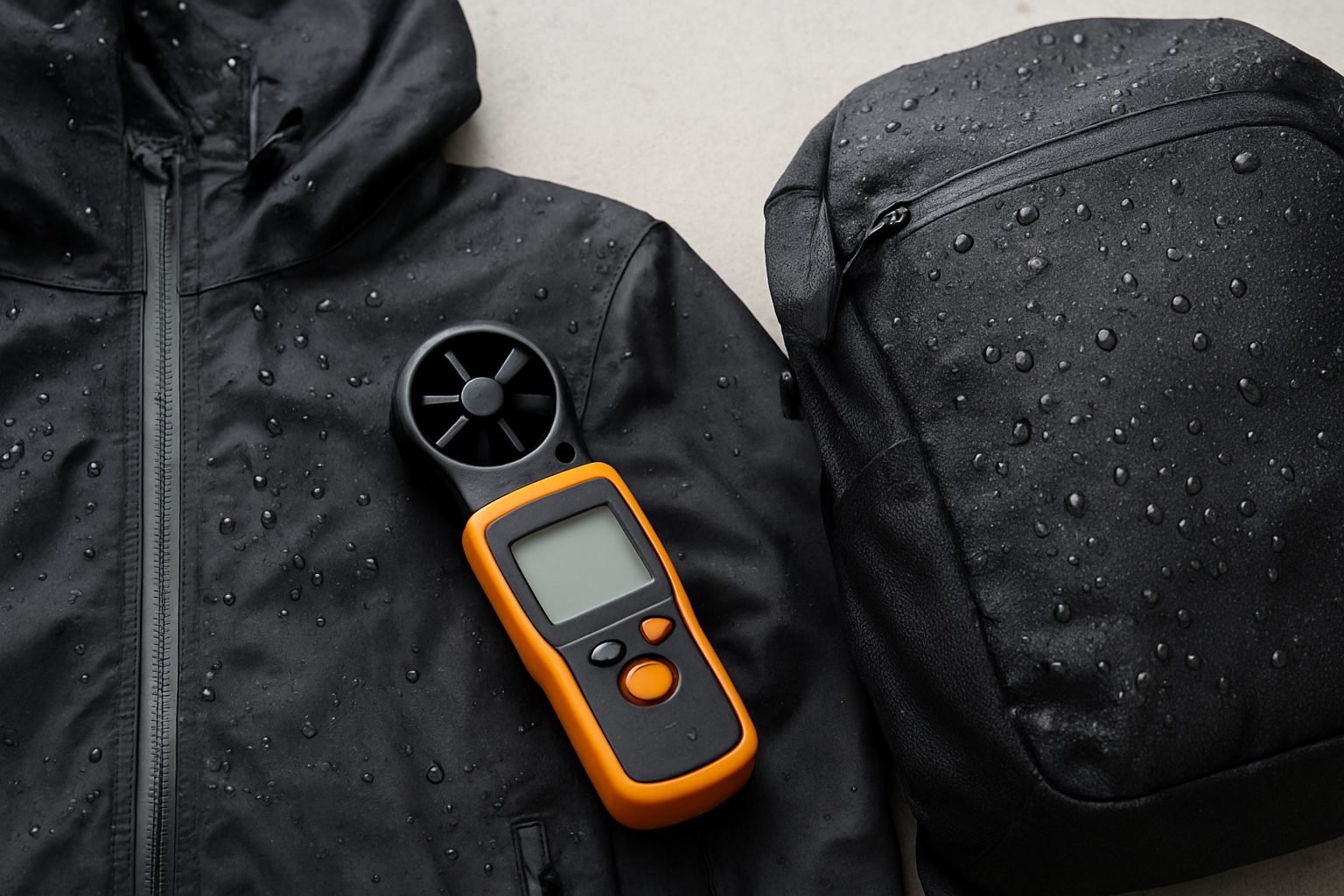
Use these benchmarks as reality checks rather than rigid rules, because campsite exposure, pitch quality, and maintenance all influence outcomes. Still, they help you ballpark performance and prevent costly surprises. If you want a fast sanity pass, compare your target tent’s specs against this chart and see where it shines or needs backup from better guylines, more stakes, or an added footprint. For sizing and placement that prevent water pooling, see our tent footprint guide. When in doubt, prioritize wind stability and airflow first; you can always add a tarp, but you cannot add pole crossings once the storm arrives.
| Condition | Minimum Target Spec | Why It Matters | Sleep-Ready Tents Note |
|---|---|---|---|
| Windy Forecast | Multiple pole crossings; 8+ guy points | Distributes load; reduces panel flutter and pole stress | Carry spare guylines and a repair sleeve for poles |
| Heavy Rain | Fly HH (hydrostatic head) ≥ 2000 millimeters (mm); floor ≥ 3000 millimeters (mm) | Prevents misting and floor seep under pressure | Add a footprint to reduce ground abrasion and wicking |
| Sun-Intense Trips | Polyester or silpoly (silicone-coated polyester) fly | Better UV (ultraviolet) stability for multi-day exposure | Rotate site to shade in afternoons when possible |
| Cold, Still Nights | High-low vents; double-wall design | Cuts condensation by improving CFM (cubic feet per minute) | Crack leeward vent to maintain escape path for moisture |
Real-World Scenario: Coastal Gusts versus Mountain Thunderstorms
Picture a breezy coastal site where sand, salt, and steady gusts test pole joints and guy points all afternoon. A low dome or geodesic wins here, with polyester or silpoly (silicone-coated polyester) fly fabric to resist UV (ultraviolet) and a 2000 millimeters (mm) plus HH (hydrostatic head) to shrug off wind-driven spray. Sand-friendly stakes and long guylines keep the pitch taut, reducing the snapping noise that robs sleep and slowly fatigues fabric. In our tests, shelters with more than eight guy points and triangulated anchors showed noticeably less deformation and zipper strain.
Now contrast that with a mountain thunderstorm that dumps an inch of rain in an hour followed by calm, foggy air. A full-coverage fly with protected vents is your lifeline, and a floor with at least 3000 millimeters (mm) HH (hydrostatic head) will resist pooling pressure under knees and elbows. Double-wall designs shine, because inner canopies stay drier when humid air has a dedicated escape route through roof vents. After the storm, crack opposing doors to create a pressure-driven cross breeze that dries gear before the next front rolls in.
Versus Verdicts: Fast Takeaways You Can Use Today
- Dome versus Geodesic: Choose geodesic for frequent high wind and exposed sites; pick dome for balanced strength and faster setup.
- Silnylon versus PU (polyurethane) Polyester: Silnylon wins on strength-to-weight but can sag; polyester holds pitch and resists UV (ultraviolet) better.
- Instant versus Traditional: Go instant for stress-free family weekends; go traditional when repairability and storm bracing matter most.
- Three-Season versus Four-Season: Prioritize airflow and full fly coverage before jumping to expedition builds you might not fully use.
- Budget versus Premium: If you camp often, premium materials and support reduce long-run costs and headaches.
A Simple, Repeatable Selection Process
- Define your primary trips: windy coasts, shaded forests, open desert, or family campgrounds.
- Pick your frame by wind profile and livability needs: dome, tunnel, cabin, or geodesic.
- Match fabric to weather: silnylon or silpoly (silicone-coated polyester) for weight; polyester for UV (ultraviolet) stability; canvas for longevity and breathability.
- Check waterproofing: HH (hydrostatic head) ≥ 2000 millimeters (mm) for flys, ≥ 3000 millimeters (mm) for floors, plus taped seams.
- Evaluate airflow: high-low vents, protected roof vents, and double-wall construction to manage condensation.
- Confirm repair paths: replacement poles, zipper access, and seam service keep you camping, not shopping.
By following this quick path, you transform a confusing market into a handful of clear choices. Sleep-Ready Tents’ expert-driven reviews, guides, and comparisons condense the noise into a shortlist you can trust. That is the power of structured testing combined with real-world nights in the wind and rain. And once you choose, the right tent almost disappears, leaving you to remember the sunrise, not the struggle.
Pick the right tent by matching shape, fabric, and airflow to your weather, and you will sleep better in every season.
Imagine spending more evenings swapping stories and fewer minutes battling bent poles, because your shelter choice fits your trips like a glove. In the next 12 months, small upgrades in venting and fabric can feel like a new lease on camp comfort.
Which tradeoff are you ready to make today so your gear comparisons lead to easier pitches, drier nights, and a calmer, cozier campsite?
Additional Resources
Explore these authoritative resources to dive deeper into gear comparisons.
Boost Gear Comparisons with Sleep-Ready Tents Fabric Expertise
With detailed tent fabric comparisons for wind, rain, and longevity, Sleep-Ready Tents delivers expert-driven reviews and guides so you confidently choose comfortable, durable shelters for any style and weather.
Related Articles

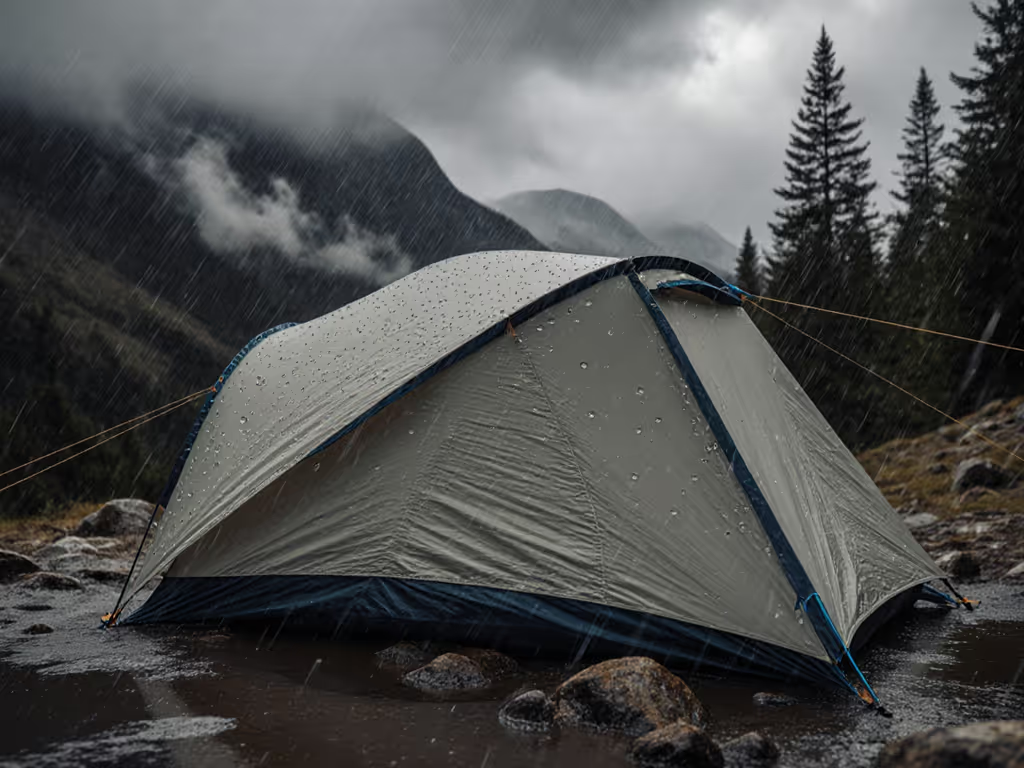
Tent Fabric Comparison: Metrics for Wind, Rain, and Longevity
Learn how nylon and polyester actually behave in storms - moisture expansion, tension retention, pole deflection, noise, and UV - so you can match fabric to your tent design and camping style for quieter, drier nights and longer-lasting gear.
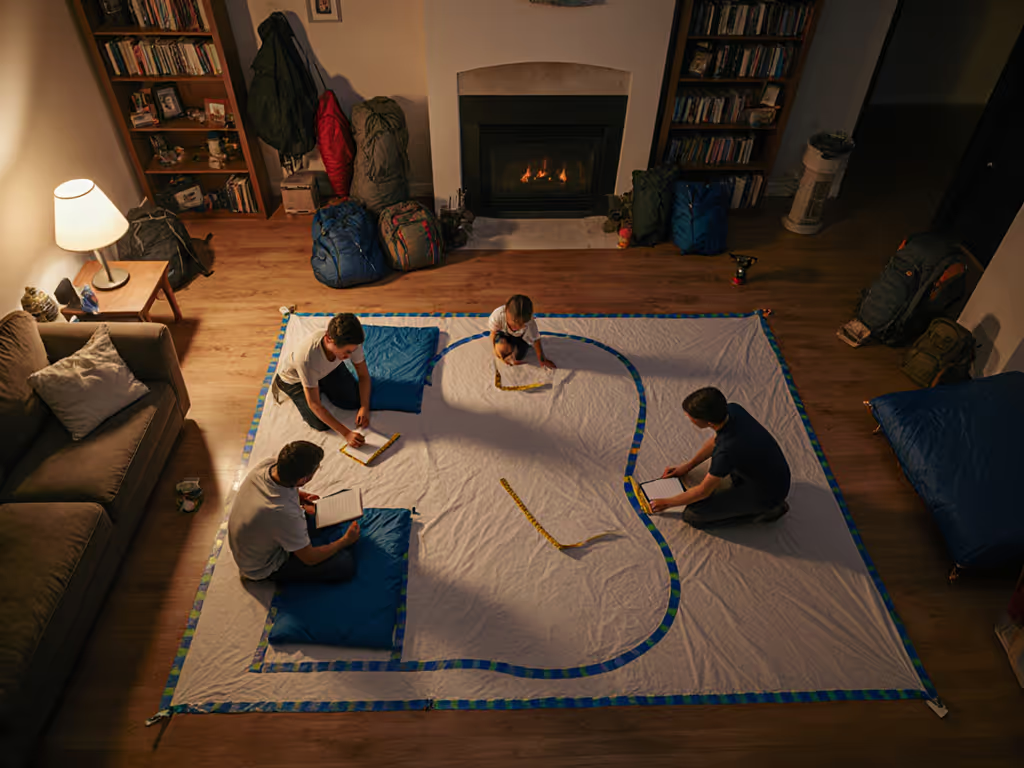
Family Tent Reality: Verified Backpacking Capacity
Cut through misleading capacity labels by using pad mapping, headroom maps, and vestibule planning to see what actually fits a family - adults, kids, and pets. Follow practical fit criteria and a simple tape-on-the-floor test to choose a backpacking tent that supports comfortable, safe sleep.
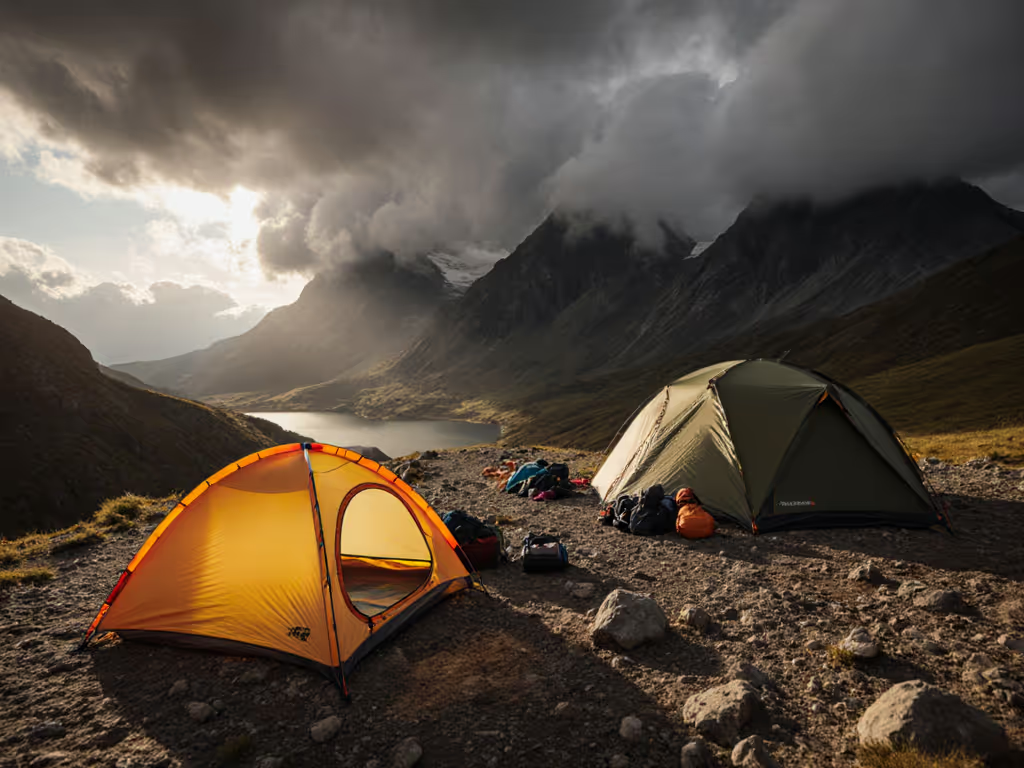
Backpacking Tent vs Family Tent: Real Space & Weather Test
See how real-world testing reveals the gap between listed capacity and usable space, and why vestibule design and ventilation matter more than specs in bad weather. Use the field-tested framework and quick at-home stress test to choose a tent that fits your routines, not just your pack list.
